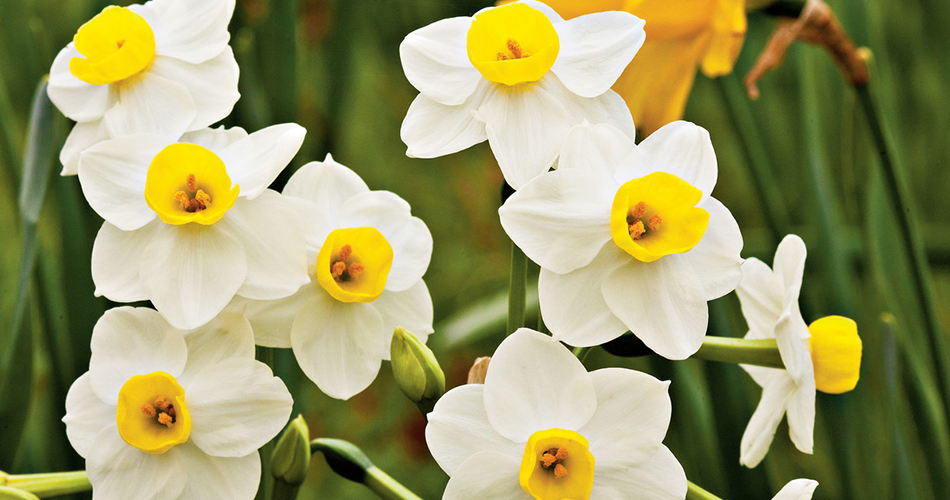DAFFODIL, a member of the Amaryllidaceae family, is a common flowering plant. Narcissus is the name of the genus that includes daffodils, narcissuses, and jonquils. Narcissus and daffodil are both correct common names for all species. Jonquils are daffodils with small, fragrant yellow flowers, several growing on a stem. All daffodils grow from bulbs. Most species have long, narrow leaves, either rush like or flat. In early spring, yellow or white blossoms, with trumpets in the centers, appear. The color of the trumpet ranges from white, yellow, and orange to pink and brilliant red. Time of blossoming depends on the species, climate, soil, and depth of planting, but most species bloom in April or May.
The daffodil is native to Europe where in some regions it grows wild. It grows well in cultivated gardens, and can also be naturalized (grown like a wild flower) under trees. Several of the daffodils, especially the paper white narcissus, can be potted for indoor bloom. There are now more than 10,000 name varieties, and breeders continue to develop new ones. There are many kinds of daffodils. The best-known daffodil is also called the trumpet narcissus it has one blossom at the end of each stalk. The daffodil has a large flower and five or six bluish-green leaves about 15 inches (38 centimeters) long. Daffodil bulbs should be planted in autumn. They should be planted about 8 inches (20 centimeters) deep, and about 5 inches (13 centimeters) apart. Daffodil bulbs are poisonous if eaten.
Bulbs should be planted in late summer or early autumn, from two to six inches deep, about 2,5 times the diameter of the bulb. They need little fertilizing, but bone meal is sometimes added to the soil. After the blossoms die, the leaves should be left on the plant until dried. Bulbs should be divided and transplanted when clumps become crowded because crowding reduces bloom.


Be First to Comment